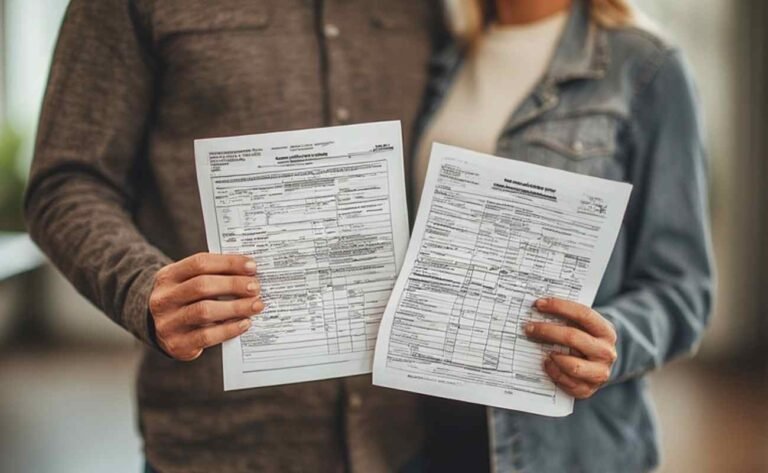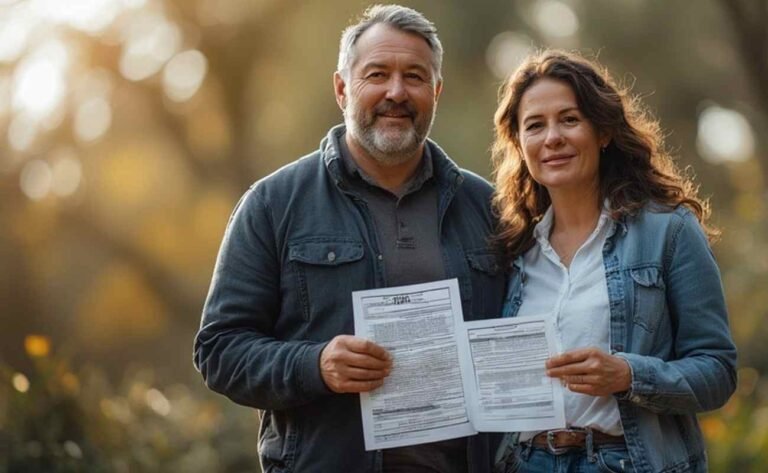Georgia’s $250-$500 Tax Rebates: When to Expect Your Stimulus Payment in 2025
Georgia residents who filed their state income taxes on time can look forward to receiving surplus tax rebates ranging from $250 to $500, depending on their filing status. This one-time payment, often referred to as a stimulus check by locals, stems from the state’s budget surplus and marks the third year in a row that Governor Brian Kemp has approved such relief. To qualify, you must have submitted both your 2023 and 2024 Georgia tax returns by the extended deadline of May 1, 2025, due to Hurricane Helene’s impact. Payments began rolling out in early June 2025, typically arriving via direct deposit or paper check within 6-8 weeks of filing. If you’re still waiting as of August 2025, check your status online through the Georgia Department of Revenue‘s refund tracker to see if your rebate is on its way.
These rebates provide much-needed financial support amid rising costs, but they’re not federal stimulus funds—they’re strictly a state initiative. Single filers get up to $250, heads of household up to $375, and married couples filing jointly up to $500. The exact amount depends on your tax liability, and not everyone qualifies if they owed taxes or didn’t file properly. With most checks already issued by now, delays could stem from processing backlogs or verification issues. Keep reading for a detailed guide on eligibility, timelines, and troubleshooting steps to ensure you don’t miss out on this cash boost.
Understanding Georgia’s Surplus Tax Refund Program
Let’s dive right in. Georgia’s tax rebate program isn’t new, but the 2025 version has some tweaks due to recent events like the hurricane extension. Essentially, the state collected more revenue than expected, so lawmakers decided to return some of it directly to taxpayers. I recall last year when my neighbor was thrilled to get his $500—it helped cover unexpected car repairs. This year, it’s similar, but with a focus on quick distribution.
First off, clarify that this isn’t tied to federal programs like those from the IRS website, which handles national refunds. Georgia runs its own show through the Department of Revenue (DOR). The program aims to ease economic pressures, and it’s automatic for eligible filers—no extra application needed.
Key Benefits of the Rebate
- Financial Relief: Helps with everyday expenses like groceries or bills.
- No Tax on the Rebate: It’s considered a refund, so it won’t increase your federal taxable income next year.
- Broad Reach: Covers millions of residents, boosting local economies.
However, if you’re expecting something like the fourth stimulus check updates from other sources, this is separate—check out our guide on national relief options for more.
Eligibility Criteria for Georgia’s Tax Surplus Payments
To make sure you’re in line for this payout, let’s break down who qualifies. Not everyone gets it, and missing a step could mean no check. Use this checklist to verify your status.
Who Qualifies for the $250-$500 Rebate?
- Filed a Georgia individual income tax return for tax year 2023.
- Filed a Georgia individual income tax return for tax year 2024 by May 1, 2025.
- Had a tax liability in at least one of those years (meaning you owed some state taxes, even if minimal).
- Resided in Georgia for the full tax year.
- Not claimed as a dependent on someone else’s return.
- Provided valid SSN or ITIN.
If you filed electronically with direct deposit info, you’re set for faster delivery. Paper filers might wait longer. Note: Non-residents or those with no tax liability (like full refunds) typically don’t qualify.
Common Disqualifiers
- Missed the filing deadline without an extension.
- Owed back taxes or child support—the rebate could offset those.
- Filed as a business entity instead of individual.
- Moved out of state before the rebate issuance.
Double-check your returns if unsure. The DOR has tools to help.
Rebate Amounts by Filing Status: A Detailed Table
Wondering exactly how much you’ll get? It varies based on your filing status from your 2024 return. Here’s a clear table to show the maximum amounts—no guesswork needed.
| Filing Status | Maximum Rebate Amount | Notes on Calculation |
|---|---|---|
| Single or Married Filing Separately | $250 | Based on tax liability; partial if under full amount. |
| Head of Household | $375 | Includes single parents with dependents. |
| Married Filing Jointly | $500 | Covers couples; highest tier for shared filings. |
These figures are capped, so if your liability was lower, you get a prorated sum. For example, a single filer with only $100 in liability gets $100 back as rebate.
Payment Timeline: Step-by-Step Guide to When You’ll Get Your Check
Timing is everything with these payments. Since the process started in June 2025, many have already received theirs by August. But if you’re still waiting, here’s the breakdown.
Expected Delivery Schedule
- Filing Date Impact: If you filed by April 15, 2025 (original deadline), expect payment by mid-June.
- Extended Deadline Filers: Those who filed by May 1 due to the hurricane extension saw payments start in late June.
- Processing Time: Allow 6-8 weeks from your filing date. Electronic filers get it quicker—often in 3-4 weeks.
- Latest Updates as of August 2025: Most refunds issued by July end; remaining ones due to verifications could arrive by September.
- Delays to Watch For: High volume or address changes can push it back.
Monthly Payment Breakdown
| Month (2025) | Key Events | Estimated Recipients |
|---|---|---|
| June | Initial rollout begins; early filers paid. | 60% of eligible |
| July | Bulk processing; hurricane extension filers. | 30% more |
| August | Final batches; any delayed due to issues. | Remaining 10% |
| September+ | Rare cases; appeals or corrections. | Minimal |
This table is based on DOR announcements and patterns from prior years.
How to Check Your Georgia Rebate Status: Easy Steps
Tracking your payment is straightforward—no need to call and wait on hold. The online tool updates nightly.
Step-by-Step Instructions
- Visit the Georgia Department of Revenue‘s Surplus Refund Checker at their official site.
- Enter your SSN or ITIN.
- Input your Federal Adjusted Gross Income from your 2023 Form 500 (Line 16) or 500EZ (Line 4).
- Submit and view your status: Eligible, Processing, Issued, or Denied.
- If “Eligible but No Update,” check back in a few days—batches process weekly.
Pro Tip: Have your tax docs handy. If it shows “Issued,” check your bank or mailbox within 7-10 days.
Common Status Messages and What They Mean
- Eligible: You’re good; payment pending.
- Processing: In queue—wait 2-4 weeks.
- Issued: On its way; note the date.
- Denied: Contact DOR for reasons, like missing filings.
Payment Methods: Direct Deposit vs. Paper Check
How you get paid depends on your tax return choices. Most opt for speed.
Options Available
- Direct Deposit: Fastest—hits your account in days. Use the same banking info from your return.
- Paper Check: Mailed to your address on file. Allow extra 1-2 weeks for delivery.
- Offsets: If you owe state debts, the rebate deducts from there first.
Update your address with DOR if you’ve moved to avoid returns.
Pros and Cons Table
| Method | Pros | Cons |
|---|---|---|
| Direct Deposit | Quick, secure, no lost mail. | Needs accurate bank details. |
| Paper Check | Tangible, no bank needed. | Slower, risk of theft/loss. |
Switch to direct deposit for future refunds via your GTC account.
What to Do If You Haven’t Received Your Rebate Yet
Delays happen, but you can take action. As of August 2025, if it’s past 8 weeks, follow these steps.
Troubleshooting Checklist
- Verify eligibility with the online tool.
- Confirm your filing status—did you e-file or mail?
- Check for DOR notices in mail or email.
- Update contact info if changed.
- If denied, appeal within 30 days with proof.
Contact DOR only if online info is unclear—lines are busy.
Tax Implications of the Rebate: What You Need to Know
Good news: This rebate isn’t taxable federally or state-wise. It’s a return of overpaid taxes.
Key Points
- No impact on 2025 taxes.
- Doesn’t affect benefits like SNAP or Medicaid.
- Report it if you’re audited, but no forms needed.
For more on refunds, see our piece on New York’s $150-$400 inflation checks for state comparisons.
History of Georgia’s Tax Rebates: Lessons from Past Years
Georgia started this in 2023 with similar amounts. In 2024, payments went smoothly, but 2025 had the extension.
Year-by-Year Comparison Table
| Year | Amounts | Timeline | Changes |
|---|---|---|---|
| 2023 | $250-$500 | May-July | First rollout. |
| 2024 | Same | April-June | Smoother process. |
| 2025 | $250-$500 | June-August+ | Hurricane delay. |
Patterns show faster future distributions.
Comparing Georgia’s Rebates to Other States’ Programs
Georgia isn’t alone—states like Alaska and New York offer relief too.
State-by-State List
- Alaska: Permanent Fund Dividend, up to $1,700 annually.
- New York: Inflation relief up to $400; more targeted.
- California: Middle-class tax refund, varying amounts.
- Pennsylvania: Property tax rebates for seniors.
Georgia’s is broader but smaller per person.
Frequently Asked Questions About Georgia’s Tax Rebates
Got questions? Here are answers based on DOR info.
Top FAQs
- When will I get my payment? 6-8 weeks post-filing; check status online.
- What if I filed late? If after May 1, 2025, you might miss out—file now for next year.
- Can dependents get it? No, only if filing independently.
- Is it a stimulus check? Informally yes, but officially a tax refund.
- What if my check is lost? Report to DOR for reissue after 30 days.
- Do non-citizens qualify? If with ITIN and filed taxes, yes.
- How much total distributed? Over $1 billion statewide.
- Any income limits? No, but based on liability.
- Can I get it if I owed taxes? Yes, but reduced by amounts owed.
- Updates for 2026? Too early; watch for budget surplus.
Tips for Maximizing Your Rebate and Future Savings
To get the most, plan ahead.
Practical Advice List
- File electronically next year for speed.
- Use direct deposit to avoid delays.
- Track expenses—rebate can fund emergencies.
- Combine with federal refunds for bigger impact.
- Stay informed via DOR newsletters.
Potential Changes and Future Outlook for Georgia Rebates
Looking ahead, if surpluses continue, 2026 could see similar or higher amounts. Economic factors like inflation play a role.
What to Watch For
- Legislative updates in fall 2025.
- Possible expansions to more filers.
- Ties to national trends, like COLA adjustments.
Conclusion: Stay Proactive with Your Finances
Georgia’s $250-$500 tax rebates offer real help, but knowing when and how to expect them makes all the difference. By now in August 2025, if you haven’t gotten yours, act fast with the checker. These programs show states stepping up where federal aid lags.
For more on related benefits, explore options like Social Security adjustments.







